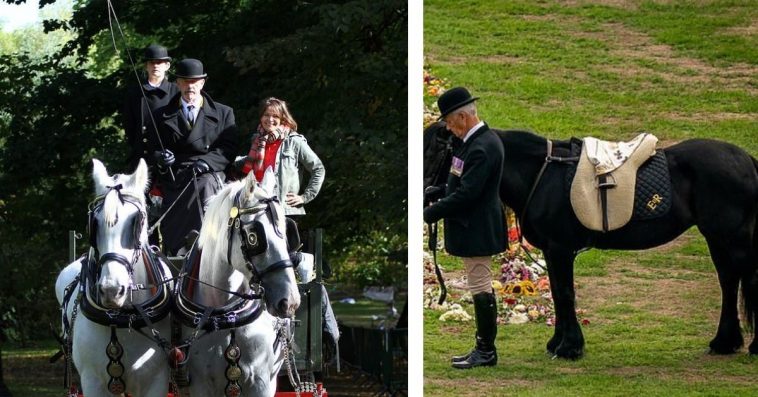There is a lot of activity in the flower garden in London’s Green Park among the heady aroma of softly wilting petals, warm horses, buffed leather tack, and early fall.
Volunteers in purple vests are sorting and saving wet stuffed animals like corgis and Paddington Bears. Many of the cards in the crates are dirty and crumpled from rain. A tree covered in cub scout ties is quietly cut down.
Union Flags are untied from tree branches and folded neatly as deflated balloons are collected.
There are several planters along one fence, by another, wreaths, candles, and candleholders.
Bryony Cross, volunteer and programs manager at Royal Parks, describes the strange and amazing items left behind: complete books created by schoolchildren, framed photos, intricate collages, jars of marmalade, marmalade sandwiches, and even some melons.
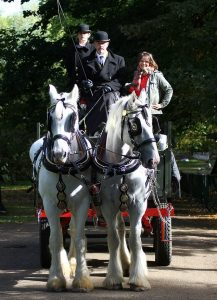
Photo Credits – Respective Owner
Millions of flowers, cards, and presents were donated in honor of the Queen and carefully placed in large, swirling loops in Green Park for guests to admire. Her crew is currently organizing a massive amount of these now-yellowing loops.
The cards, each so intensely personal and from worldwide, stand out. I miss you — you’ll probably be the only Queen in my life, love from Hannah, reads one, blurred by rain and written in a child’s script.
One more, enclosed in a plastic bag, says: “To the Queen’s family, sorry for the death of your mother and grandmother, love Ollie, aged seven, Leo, aged five, and Oscar, aged two.”
Even, after all we have witnessed over the past few weeks, including the processions, lines, lying-in-state, and funeral, the sight and scent of millions of softly decomposing flowers is unexpectedly touching. Quiet and serene yet also quite moving.
Not least because two excellently groomed grey shire horses, Heath, 17, and Nobby, 14, who weigh a ton each and measure 18 and a half hands and are decorated with royal medals, are nearby and tethered to a stylish bottle-green flat-bottomed dray. They are being cared for by three grooms dressed in bowler hats and thick, black-buttoned greatcoats.
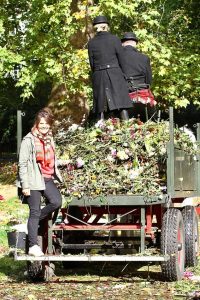
The horses may appear to be in a parade, but their purpose is to carry out work. Load after load of the dead and dying flowers had to be transported nearly two miles via Green Park, through Wellington Arch (where the Queen’s funeral procession halted before making its last trip to Windsor Castle), and through Hyde Park to the enormous royal compost heap where the floral tributes would be mulched.
And there are no two more suitable horses for the task. According to head coachman Edward McDowell, “It’s an honor and a privilege – of course, we all jumped at the possibility.” But since they are paying their respects, it’s appropriate for them.
When she saw Heath and Nobby in the Channel 5 program Hampton Court: Behind Closed Doors while watching TV in Windsor Castle, the Queen became particularly close to them.Edward, 69, adds, “She saw them, presented the video to her yard manager, and said to him, “I want them two for the Jubilee parade.”
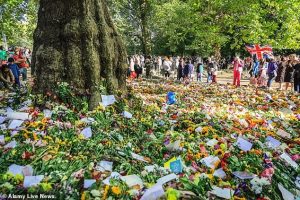
Naturally, these two gorgeous horses from the great Operation Centaur, which specializes in employing heavy, working horses in the community, were brought to Windsor Castle and housed outside the Queen’s apartment.
According to Edward, “she came and looked them over when they got there and said she couldn’t wait to see them all plaited up for the show.” She later visited them and gave them some carrots. She was aware that these were truly unique.
Shires are unique vehicles that can easily transport three tonnes, as anyone who has dealt with them would attest.
They aren’t like regular horses, Edward claims. They are wiser and more intelligent.
They are your coworkers; they are not your employees. Although they might be pretty angry, I believe they are more sensitive towards humans.
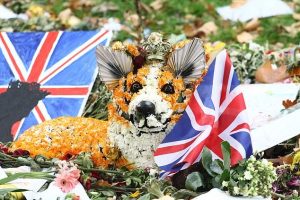
Additionally, this couple puts forth a lot of effort in the royal parks, mowing the grass in Richmond Park, rolling bracken, chopping wood, establishing wildflower meadows, and running the trams at Hampton Court Palace.
The volunteers are working hard here. Many work two shifts as they wait eagerly for the next shipment.
Carefully remove the flowers’ knots and elastic bands before heaping them up. The nursery staff put the soft toys into plastic boxes while carefully removing the messages, cards, and Paddington and corgi drawings, which were ready to be dried up and then kept in temperature-controlled rooms (though where is yet to be determined).
We’re trying to conserve as much as we can, adds Bryony Cross, using every scrap of paper and little note. “Nothing will be wasted.” However, the process is highly cautious and slow. Fortunately, there are many volunteers, each of whom is shocked by the size of the task and is present for a different reason.
Some people only wish to express gratitude. Some people, like Pauline, wanted to do something to honor the Queen even if they missed the burial and procession.
Aarti wants to offer assistance helpfully. “To be here is an honor and a privilege.” Fiona was more interested in finding closure. She claims, “It’s helping me realize it’s true, and it has truly occurred.” Reading all the tiny notes “moves me to tears,”
She is entirely correct. The next one I take up is a nicely laminated image of a gathering of people who are all using wheelchairs and is engraved with the words, “Thank you for being our inspiration, Ma’am.”
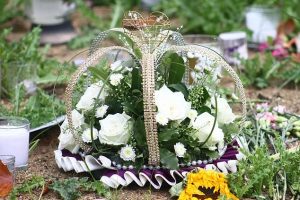
‘Thank you for welcoming me to your country and bringing comfort and security to my family through trying times,’ the card next to it, ‘Your subject,’ says.
One of them says, “You were the GREAT in Britain,” and is buried more profoundly in the mound next to a tiny constructed throne and some dead iris flowers. There are also two framed memorials from Norfolk Island, a little settlement between Australia and New Zealand. As they work, we continue to talk, and once the dray is full, Nobby, Heath, and I go to the royal compost pile.
Isn’t the entire event entirely ceremonial? As we leave, Edward adds, “And incredibly environmentally friendly. “I think she would have enjoyed it.” It’s only an act of respect.
It also has an oddly magical quality. The quiet pace of the horses moving in unison. The aroma of so many withering flowers blended with their warm, earthy perfume.
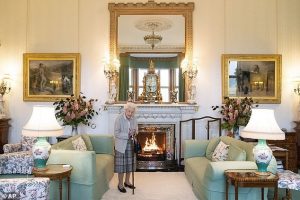
When we move around Hyde Park Corner, past Wellington Arch, and into Hyde Park, the joggers and commuters pause to take pictures or stand silently.
Additionally, there was a pleasant conversation with Edward, Tom Nixon, 57, and Lizzie White, a stable boy and a lady who had worked with horses their entire lives and couldn’t be happier with their lot.
A silk headscarf belonging to the Queen was draped over the saddle of Emma, her favorite fell pony. At the same time, she observed the funeral procession at Windsor. This observation may have left people even more in fear of the Queen’s exceptional understanding of horses. She was riding every day up until not too long ago. According to Edward, she frequently visited Emma at the stables.
She was once one of the Duke’s driving horses, and I believe he wasn’t too pleased that the Queen had taken her. She may have preferred something slightly safer and lower ground, though.
Perhaps as a result of her constant headscarf use? Edward gently responds, “It’s not illegal to not wear a hat. But I believe that was probably due to her. I bet they will amend the legislation right now.
Dog walkers in Hyde Park stop in their tracks as we pass. They express gratitude. It appears that a couple is praying. An old boy jumps off a park seat and gives a salute.

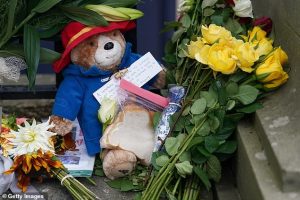
Oh my, when we do arrive there at last! The royal compost heap, also known as the leaf corral, has enormous, steaming mountains of hot compost and a yard overrun with tractors and diggers, which would get any gardener’s pulse racing.
The hundreds of pounds of withered flowers will be converted into mulch, which, according to Andrew Williams, Kensington Gardens’ park manager, will help the park’s soils for the next 500 years. New life from old.
The dray is empty on the journey back, but for a few rose petals that have been scattered. The horses appear more restless, especially when we reach Hyde Park Corner, where they can hear the trains rumbling from below.
They will complete three to four more loads today before returning to Hampton Court Palace for a short break before getting back to work logging, rolling, and plowing bracken. We are all honored to be here, adds Tom gently.
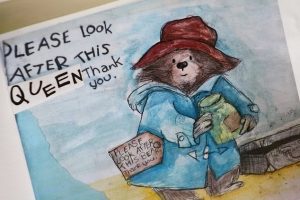
I fully agree. The entire situation is remarkable.
Of course, they could have just piled all the wilting flowers into a few enormous recycling trucks and been done with it. It would have happened a lot faster. And certainly a lot less expensive.But instead, we have this lovely, solemn ceremony in the middle of the wilderness. These stunning working horses, shiny after buffing and grooming, are paying their respects.
Tom is seated on top of his tartan rug and holding the reins. Lizzie with a bowler and hairnet. Joggers who pause as we pass as a show of respect.In the waning autumn light, volunteers also work hard quietly, peacefully, and frequently with tears in remembrance of our beloved late Queen.
How admirably, upbeat, and gloriously British.

